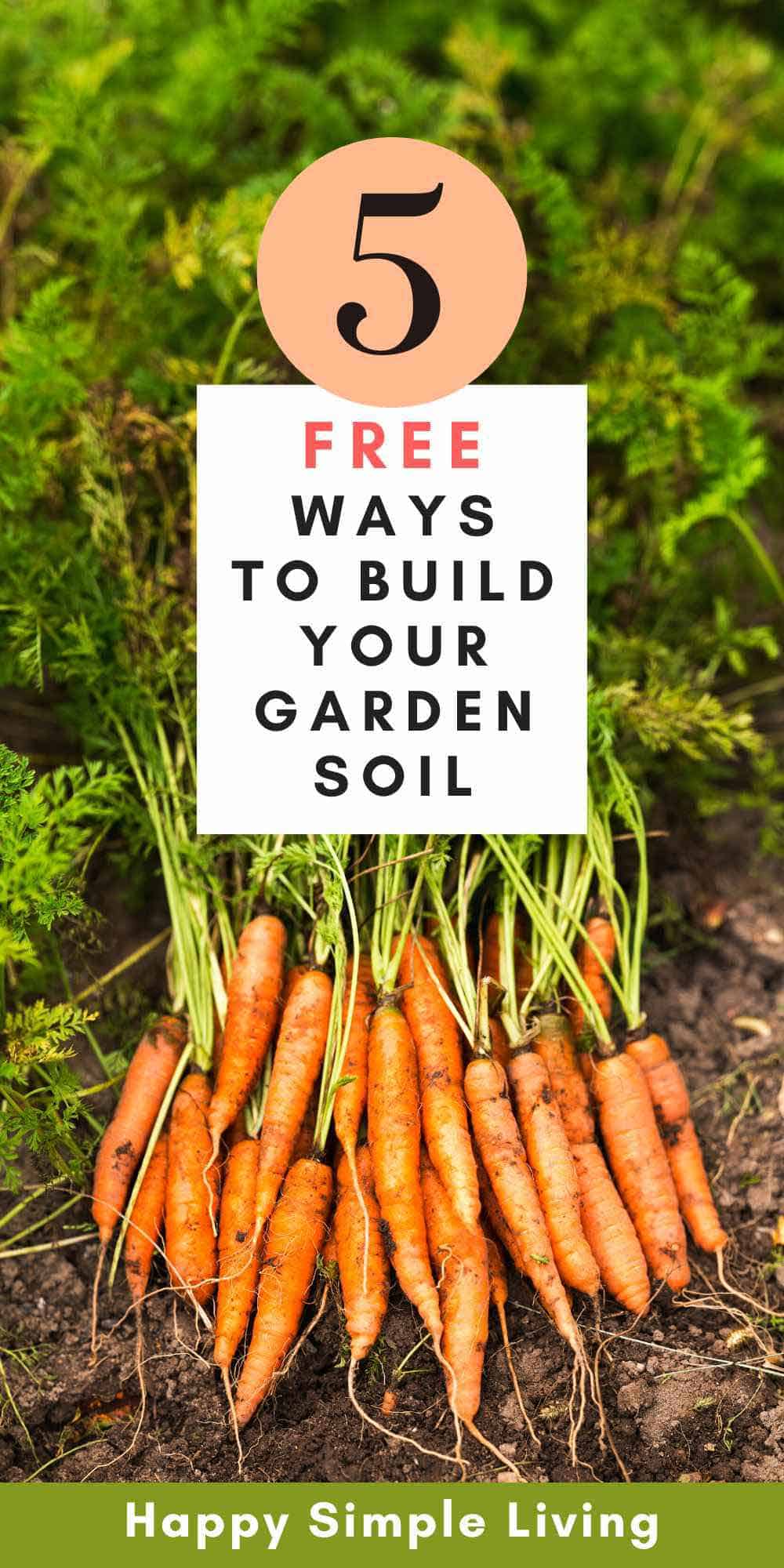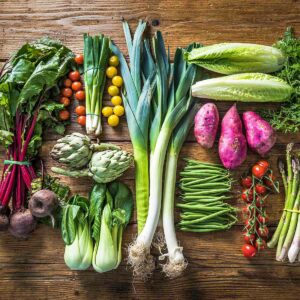Ever wondered how to build soil in your yard or garden? These five tips will help you enhance your garden soil structure, and best of all they’re absolutely free.
Whether you’re improving the dirt in your vegetable garden, raised bed, or flower garden beds, these simple tips will help you develop healthy soil.
We love finding ways to simplify gardening and save money! For more ideas, you might enjoy “Frugal Gardening, or How To Avoid $100 Tomatoes.”

One of my all-season, every-season garden tasks is working to improve our soil.
The dirt surrounding our suburban home is mainly heavy clay. The wonderful thing about this clay soil is that it’s full of good nutrients and minerals.
The challenge is that it’s heavy and tightly packed, which makes it tough for roots to get through. Enhancing the garden soil here is a project I’ve been working on for more than ten years.
A master gardener with a spectacular yard full of exotic blooms once told me that more than any other skill, the real secret for successful growing is cultivating good, rich dirt.
The good news is, you can take advantage of nature’s perfect, self sustaining cycle and help improve your soil without spending any money at all.
The Basic Types of Garden Soil
What kind of dirt do you have in your garden?
Let’s review the three general characteristics:
Clay soil is heavy and sticky, and if you squeeze it together it forms a ball. It packs together very tightly and lets very little air in. When it dries it is very hard and difficult to dig through, and hard for roots to penetrate.
Sandy soil is easy to dig, and roots can generally through it well. However, the good drainage qualities of sandy soil mean that water and minerals drain out easily, too, leaving the soil dry and nutrient deficient.
Loam is perfect soil that, in the immortal words of Goldilocks, is “just right.” Loam is dark, rich, and full of life, easy to dig, with a texture that holds in nutrients and water while allowing good drainage and root penetration.

5 Ways to Build Soil Structure
Here are five free things you can do to improve your soil so it reaches the Loam gold standard:
1. Start a compost pile. It can be as plain or fancy as you like. You can make a pile in a corner of your yard, or purchase a compost bin.
Add grass clippings, kitchen scraps, coffee grounds, tea bags, peelings, cores, nut shells, wood chips, shredded newspapers, leaves, dirt from pots, clay clumps, and more.
Keep the mixture moist but not wet, tun it occasionally, and over time these elements will break down and become a dark, rich, crumbly natural fertilizer that can be added to soil and gardens.
2. Loosen the soil. Use a garden fork with a back and forth motion to loosen the soil to a depth of about one foot. This will help break down any large clumps in the soil and help drainage.
3. Use a spade or hoe to clear the roots, stones, unwanted grass, clay clumps and weeds from your garden. Use your fingers to break up any small clay clamps and distribute throughout the soil mixture. I put very large, hard clods of clay in the compost pile to decompose.
4. Add organic matter like compost to your soil every year. Organic materials will add vital nutrients and improve the ability of the soil to hold water while allowing the excess to drain away. It will improve the texture and make it easier for roots to grow through.
5. Use a metal garden rake to rake through the soil and make the dirt smooth and level. Try to avoid walking on your garden dirt, so it doesn’t get packed down.
If you do these tasks every growing season, after a few years you will notice a huge difference in the quality of your soil. You’ll be able to direct sow seeds for vegetables and flowers in the springtime.
The Benefits of Good Soil
It will be much easier to dig holes for planting, and the plants will thrive because they are getting plenty of good nutrients from the soil organisms and their roots will benefit from good drainage.
Remember to rotate your crops and periodically let your garden go fallow so that the dirt doesn’t get depleted of important nutrients.
If you have a garden, have you found other ways to improve the soil? What challenges do you have with the dirt in your space?
If you don’t have a garden, are you growing plants with potting soil in containers or working in a community garden? We love hearing from you, so drop a comment below!
Save for Later
If you use Pinterest to save and share ideas, here’s a handy pin:


Eliza Cross is the creator of Happy Simple Living, where she shares ideas to help busy people simplify cooking, gardening, holidays, home, and money. She is also the award-winning author of 17 cookbooks, including Small Bites and 101 Things To Do With Bacon.







That’s a great list! One of my tricks is to mulch with straw or wood chips – it really helps to keep the soil from drying out too much. And by the time the next season starts, a good chunk of it (the bottom layer) has decomposed and turned to compost, so I rake off the top layer (usually the bigger chunks) to re-use as mulch, and turn the rest into the soil before I plant. Rinse and repeat. Not sure what the guidelines are for mulching in a wetter climate, but it works great here!
So many great suggestions here that I can add to my spring gardening to-do list! Thanks so much fort this great article!